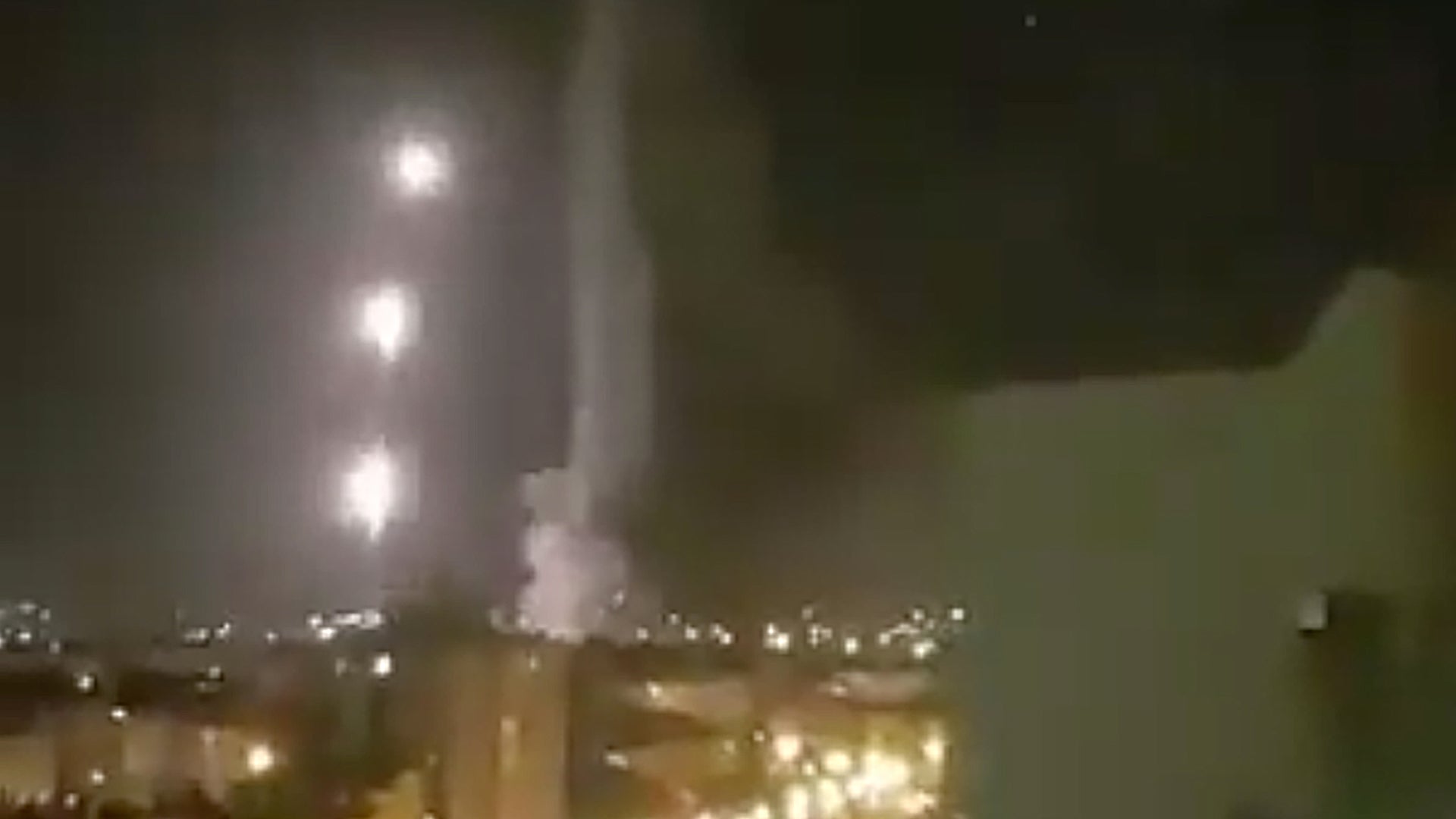A quiet Sunday evening in southern Israel was interrupted by air raid sirens and the rapid firing of Tamir interceptors from local Iron Dome missile batteries. At first it was claimed that Hamas had launched a rocket barrage but it turns out that the Israeli Defense Forces claim Iron Dome was activated by machine gun fire—something it is definitely not supposed to do.
IDF Spokesman Brigadier General Ronen Manelis told the Jerusalem Post the following after the supposed attack:
“Everything is routine… All of the alarms were triggered by machine gun fire in Gaza. There were no rockets which fell inside Israeli territory.”
The miscue was a costly one. A rash of videos depicting the launches were posted on social media and it looks like at least three separate salvos of interceptors—each costing $50,000—took to the skies in rapid succession. One was of five missiles, followed by another of three more, and then another of four more interceptors, tracking towards a very low altitude target that we know now really didn’t exist.
The IDF is investigating how the gunfire triggered the launches and the air raid sirens, but the ELM-2084 3D multi-mission radar used to provide detection and targeting for the interceptors is known to be highly sensitive. It’s capable of detecting and tracking anything from an aircraft all the way down to artillery rounds and even small mortars. With this in mind, a dense string of machine gun fire may have triggered the system and its operators erred on the safe side.
Typically the Iron Dome system has a low misfire rate, although they have occurred, and won’t execute a launch if the projectile it is tracking is predicted to land in an unpopulated area.

The IDF followed up their original statement, saying that the system was calibrated at a very sensitive level before the accidental launch and that the high-trajectory of the gunfire was identified by the system as a threat.
General Zvika Haimovich told reporters on Monday the following:
“The system identified a launch toward Israel, toward the community of Zikim, which acted like a ballistic missile in every way. It was a serious threat… There was neither a human nor technical error… There was system over-sensitivity, and we had five seconds to decide. The moment something is launched from the ground toward Israeli territory, we consider that a threat… We are operating in a very complex environment in which there are mortars, missiles, rockets, machine guns and heavy machine guns, some of which are standard and some of which are not… Today, there are rockets that are fired like artillery shells and there are mortars that behave like missiles. Our enemies are learning and developing.”
It’s true that Hamas is actively trying to learn how to game the Iron Dome system, but the explanation still seems a bit odd, and it isn’t clear exactly what he meant when he said some of Hamas’s weapons are standard and some not. It’s possible that some other reason was at least partially to blame for the incident, although openly discussing it could give away vulnerabilities with the Iron Dome system.
Regardless of what exactly set the system off in this case, the videos show just how insanely maneuverable the Tamir interceptor is. Some almost unbelievable snap turns can be seen as the missiles burn off their kinetic energy after their rocket motors burn out.

Each of Israel’s Iron Dome batteries consists of a radar system, a few launchers containing 20 Tamir interceptors each, and a battle management and control unit. The 200 pound interceptor carries a 24 pound warhead that is detonated via a radial laser proximity fuse. Range is highly dependent on the target’s flight profile but it’s listed as between roughly two and a half and 40 miles.
It is widely noted that Iron Dome touts a success rate of 90 percent, but that number is based on projectiles it chooses to engage and usually at least two interceptors are fired at each target. Still, the system has proven to be remarkable in its capability and reliability which is what makes this incident so odd.
In a bizarre coincidence, the misfiring of the Iron Dome battery in Israel occurred while Saudi Arabian Patriot missiles were attempting to intercept ballistic missiles fired from Yemen. Some of the Patriots malfunctioned spectacularly during that incident, resulting in even more dramatic video.
Contact the author: Tyler@thedrive.com
